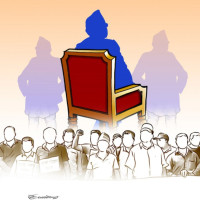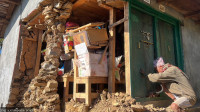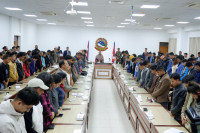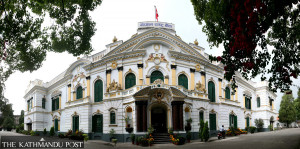Columns
Perilous journeys
Conflicts always lead to displacement of people and create conditions for human trafficking.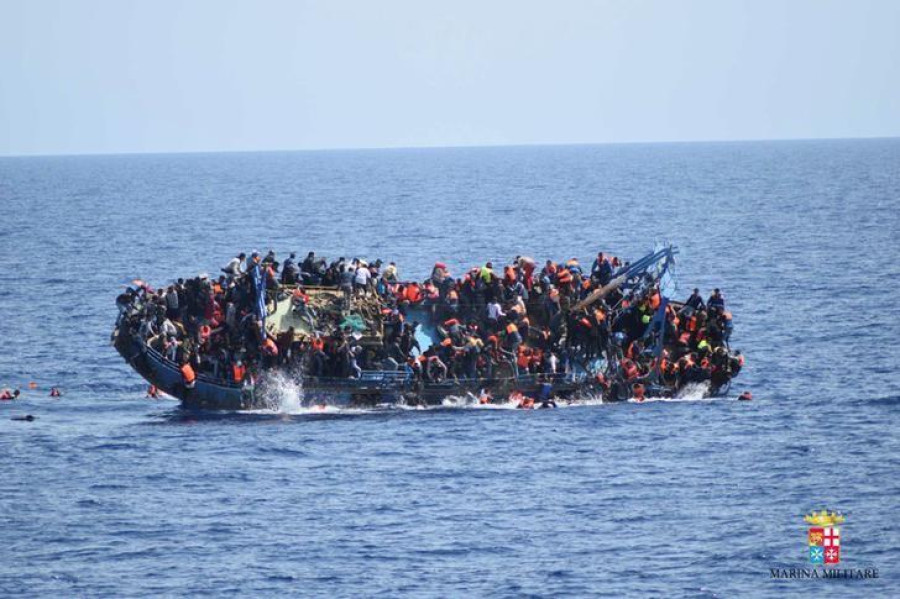
Kashif Islam
The recent freezing to death of an Indian-origin family of four on the Canadian border with the United States, a few metres away from the line, made international headlines. The unfortunate Patel family—the two parents and their two kids—had spent close to $100,000 paying smugglers to get them into America. The smugglers first got them on a tourist visa into Canada before trying to sneak them into the US. Several others succeeded in the attempt, but for reasons unknown, the Patel family froze to death in the open. What would have been the beginning of a new, albeit unpredictable life for the Patels in the US, turned out to be their undoing.
This was certainly not the first time that such an event had happened. In 2019, dozens of Vietnamese migrants were found asphyxiated in a refrigerated truck into which the smugglers had stuffed them to enter the United Kingdom. Scores of migrants from Mexico and Central America die of exhaustion and drowning while crossing deserts and rivers. Perhaps, no other route takes such a toll on migrants’ life as the Mediterranean, where thousands of desperate migrants drown every year, trying to enter Europe in makeshift boats.
Throughout history people have always migrated to escape problems at home or in search of a better life. This is how the New World of North and South Americas, as well as the colonies of Australia, New Zealand and others, were settled. Even more than moving to far away, distant places, people have always moved from one region to another, from one town to another.
As long as national boundaries were fluid and there were no physical barriers such as fences or border patrolling, people could more or less freely move. However, with the emergence of nation states, restrictions on movement of people have tended to continuously increase, particularly between the developed and developing countries. Paradoxically, these restrictions on movement on people have tended to get stronger with increasing globalisation. Today, it is virtually impossible for a good proportion of the world's population to legally migrate or settle in another country.
Very often the policies around migration revolve on considerations other than purely rational ones. For decades, India and Nepal have had an agreement allowing nationals from both countries to travel and work in either country without applying for a formal work visa. This has led to an inflow of Nepalese workers in semi-skilled sectors such as security and the hotel industry. On the other hand, Bangladeshis trying to escape poverty in their homeland are forced to take the illegal route and conceal their identity if they manage to get into India.
Likewise, with near constant and even declining populations, many developed countries will soon have a very high proportion of aged people compared to the working population. Yet, few if any, have any coherent policy on migration.
The problem at heart is that there are way too many people from the developing countries looking to migrate to a developed country, compared to the number of people the developed countries are willing to let in. While unskilled workers could move to countries like the UK, France and Germany to work in factories and do other unskilled jobs up until the 1970s, those doors have long since closed. Owing to deindustrialisation and the shift to a knowledge-based economy in Western Europe and America, there is no need for them to import unskilled labour.
Most immigration into the developed countries consists of students staying back to work after studies. Low skilled workers with few educational qualifications have only a few places to work as guest workers such as the construction workers in the Middle East, or housemaids in Japan, which however do not allow them to settle. Except for a handful of countries such as Canada, few developed countries have any programmes for taking in migrants.
It is this fundamental disequilibrium that has led to the growth of a market in human smuggling which thrives on moving people illegally through various, often very dangerous, means, and charging very high prices in the bargain. The most infamous of the human smuggling racket thrives in Northern Africa where people from all over the world try to cross the Mediterranean in makeshift boats. Starting from one of the transit points in Sub-Saharan Africa, the migrants often make long journeys in jeeps and vans across deserts and forests to reach one of the points of embarkation in Northern Africa.
From there, the traffickers dispatch them in air-inflated boats. While on board, the migrants remain at the mercy of the sea, hoping to get picked by one of the humanitarian groups rescuing migrants or land on one of the islands in Italy, Spain or Greece. Very few of these migrants are accorded citizenship in Europe and often, they end up getting deported or working clandestinely in the grey economy. There are unfortunately no easy solutions to this. It is clear that despite ongoing economic growth, very few developing countries will be able to match the standard of living of the developed countries in the next few decades. People from Asia, Africa and South America will continue trying to enter Europe and America at any cost.
On the other hand, the developed countries cannot afford a relaxed regime for unskilled workers. There is no public support for migration in any of the developed countries. When the then German chancellor Angela Merkel agreed to take in a million Syrian immigrants, the German government faced a terrible backlash at home. Strong anti-migrant sentiments are also conspicuous in the many right-wing parties from the Netherlands to Italy and Greece.
Instead, there could be better international cooperation ensuring that human trafficking rackets are kept in check. A successful funding by the European Union to the Niger government led to a drastic fall in the number of migrants leaving that country into Libya on their journey to the Mediterranean. Perhaps, what the leading countries can do best to alleviate the migrants’ sufferings is play a more active role in preventing and containing long-running conflicts such as the civil wars in Syria and Libya, and the more recent one in Ethiopia. Chronic internal conflicts targeting civilians almost always lead to displacement of people and create conditions for human trafficking and illegal migration.




 17.12°C Kathmandu
17.12°C Kathmandu


